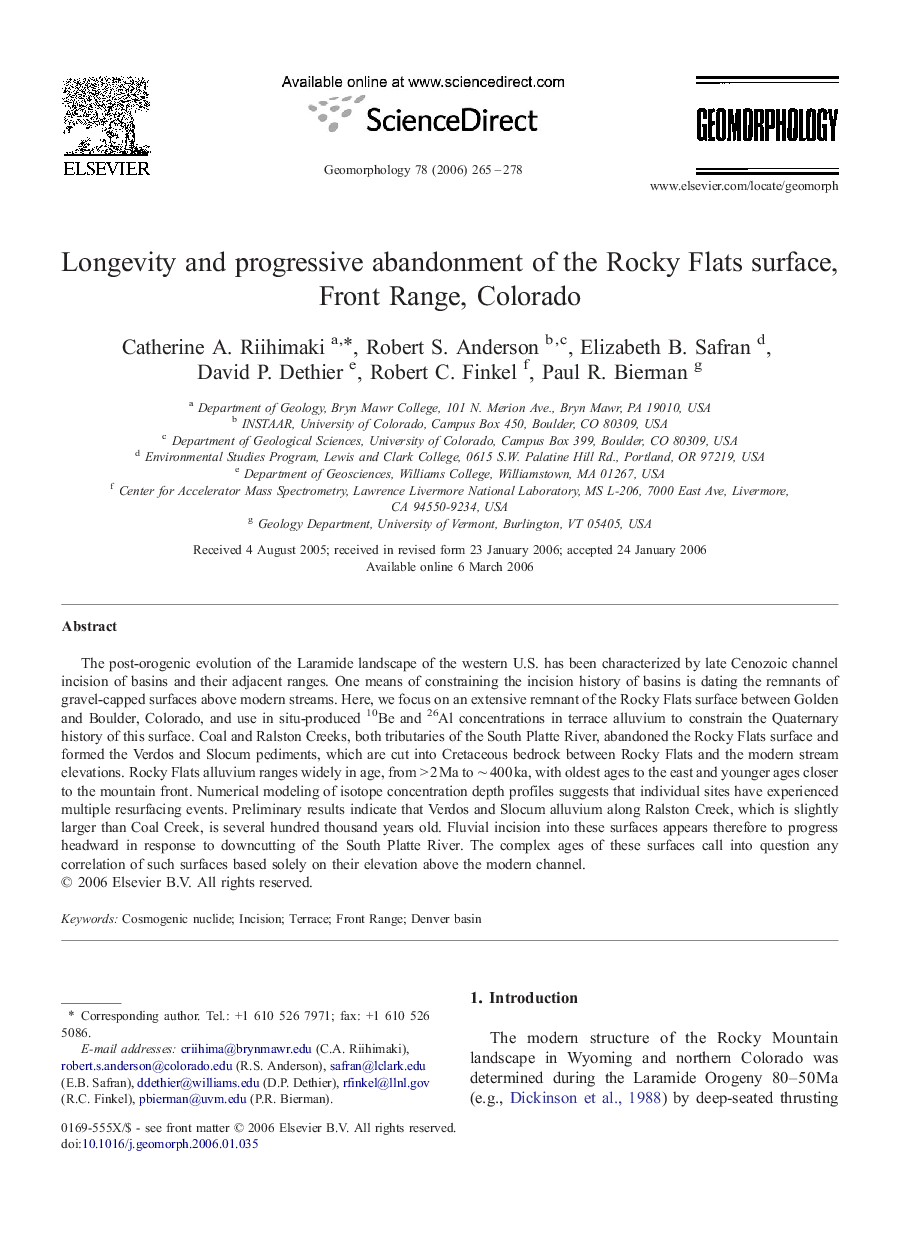| Article ID | Journal | Published Year | Pages | File Type |
|---|---|---|---|---|
| 4687554 | Geomorphology | 2006 | 14 Pages |
The post-orogenic evolution of the Laramide landscape of the western U.S. has been characterized by late Cenozoic channel incision of basins and their adjacent ranges. One means of constraining the incision history of basins is dating the remnants of gravel-capped surfaces above modern streams. Here, we focus on an extensive remnant of the Rocky Flats surface between Golden and Boulder, Colorado, and use in situ-produced 10Be and 26Al concentrations in terrace alluvium to constrain the Quaternary history of this surface. Coal and Ralston Creeks, both tributaries of the South Platte River, abandoned the Rocky Flats surface and formed the Verdos and Slocum pediments, which are cut into Cretaceous bedrock between Rocky Flats and the modern stream elevations. Rocky Flats alluvium ranges widely in age, from > 2 Ma to ∼ 400 ka, with oldest ages to the east and younger ages closer to the mountain front. Numerical modeling of isotope concentration depth profiles suggests that individual sites have experienced multiple resurfacing events. Preliminary results indicate that Verdos and Slocum alluvium along Ralston Creek, which is slightly larger than Coal Creek, is several hundred thousand years old. Fluvial incision into these surfaces appears therefore to progress headward in response to downcutting of the South Platte River. The complex ages of these surfaces call into question any correlation of such surfaces based solely on their elevation above the modern channel.
